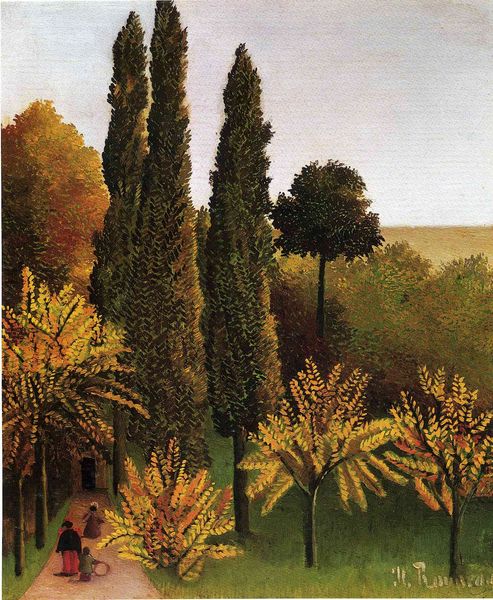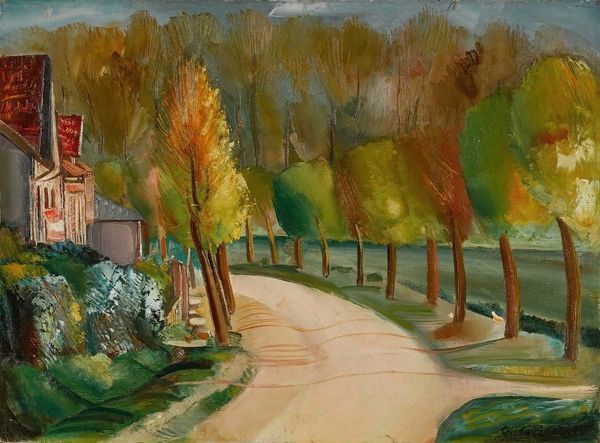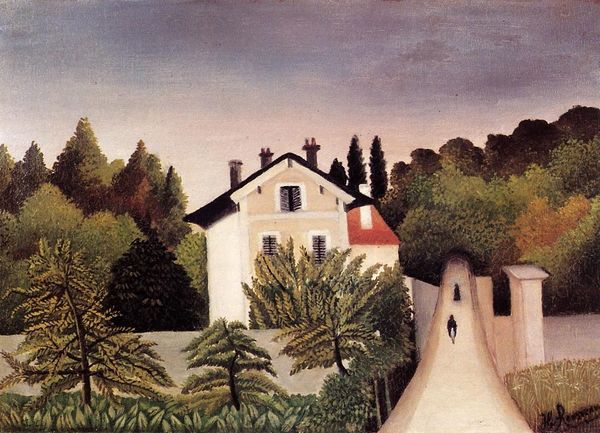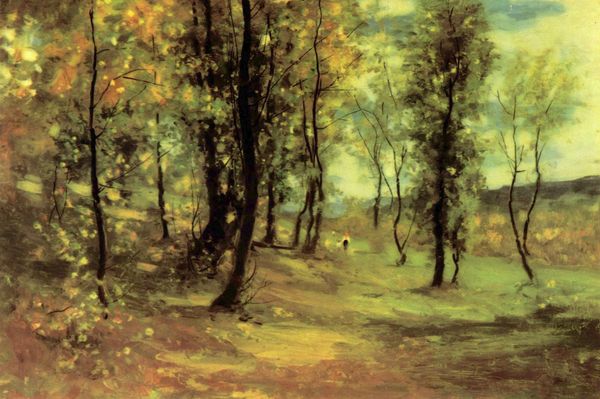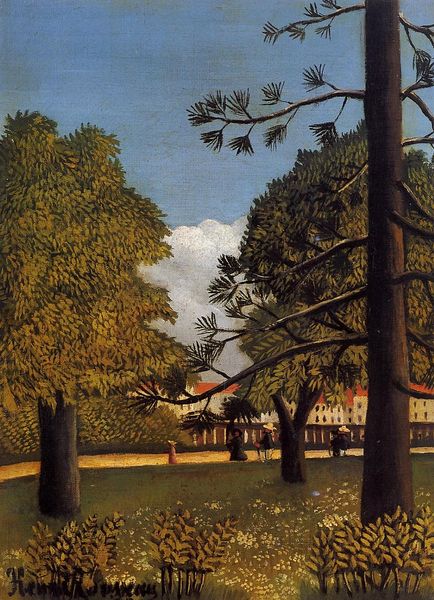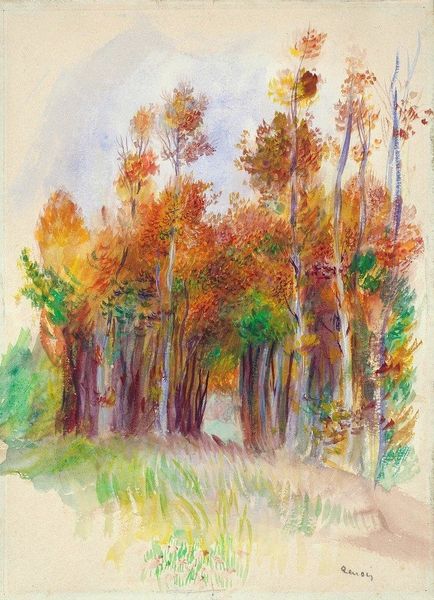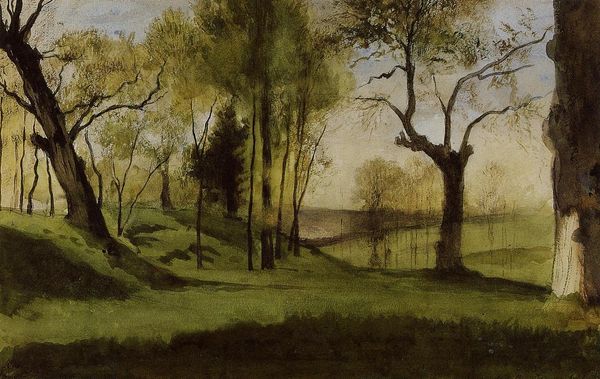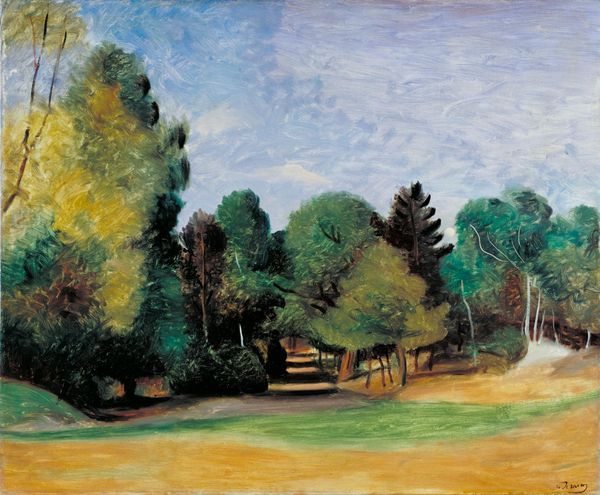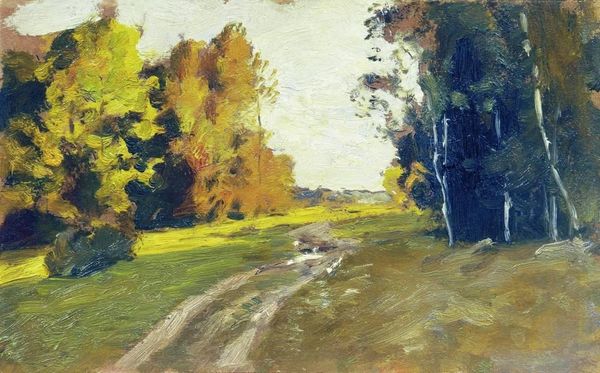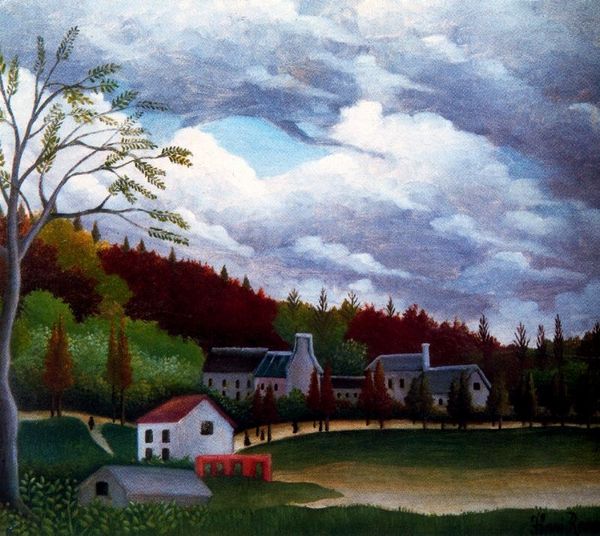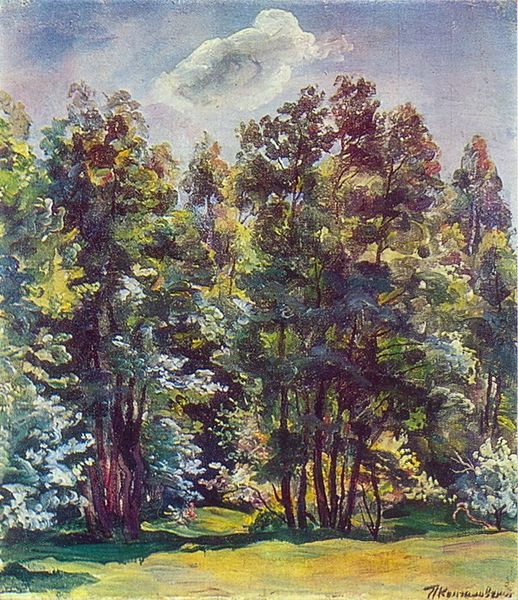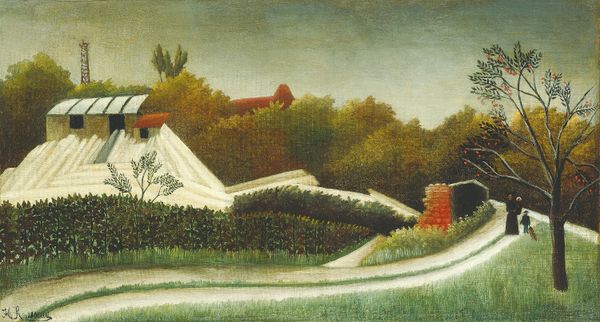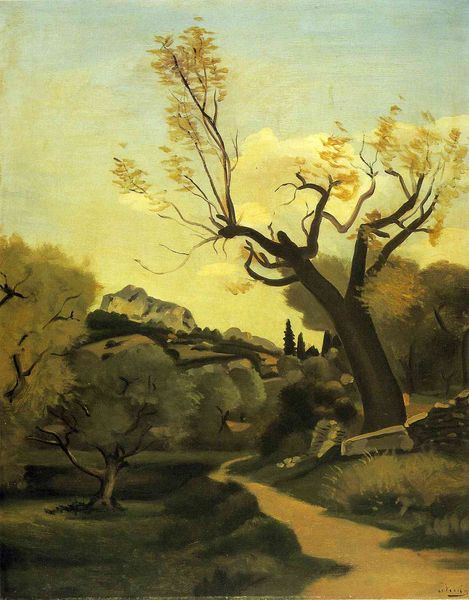
painting, oil-paint
#
painting
#
oil-paint
#
landscape
#
oil painting
#
post-impressionism
Copyright: Public domain
Editor: We're looking at Henri Rousseau’s "View of the Banks of the Oise," painted in 1906 using oil paint. It's a charming landscape, very still and…peaceful. What strikes you most about this piece? Curator: What's fascinating is how Rousseau's 'naïve' style, seemingly untutored, resonated deeply with the avant-garde seeking authenticity and a break from academic conventions. Consider its appeal to artists like Picasso. They weren't just amused; they saw a genuine vision, untouched by the pressures of the art market. Editor: So, his lack of formal training was almost… an asset? Curator: Precisely. The 'naïve' label freed him, and, paradoxically, became a selling point, although one wonders if that was intentional or accidental in shaping his public persona. Think about the art world in the early 20th century – what did 'authenticity' even mean when art was becoming so self-aware? How might a dealer market 'genuine innocence'? Editor: That’s a really interesting point about the marketing of authenticity! It seems like his work ended up being consumed and celebrated in ways he couldn’t have predicted. Curator: Absolutely! Rousseau was a product of a changing world and also became a shaper of new possibilities within that world. His image as this self-taught "primitive" was crucial to his success. We can still see how deeply Rousseau’s position as an outsider shaped our art history today. Editor: That's given me a completely different way to see it! Thanks for shedding light on that, I definitely learned something new about the artist and the era! Curator: Glad I could help! Looking at art with a historical lens always opens up new pathways for discussion and critical thinking.
Comments
No comments
Be the first to comment and join the conversation on the ultimate creative platform.
